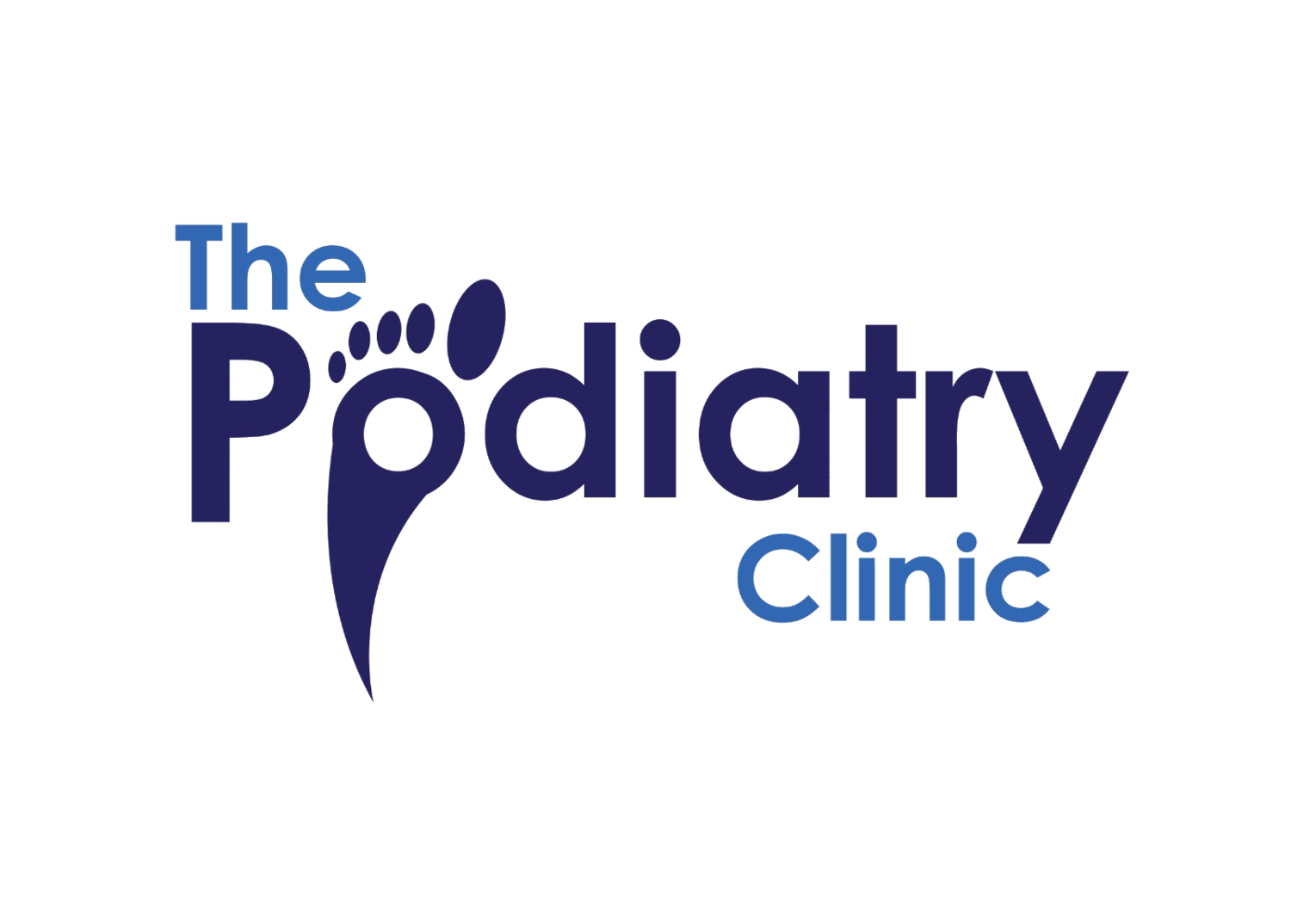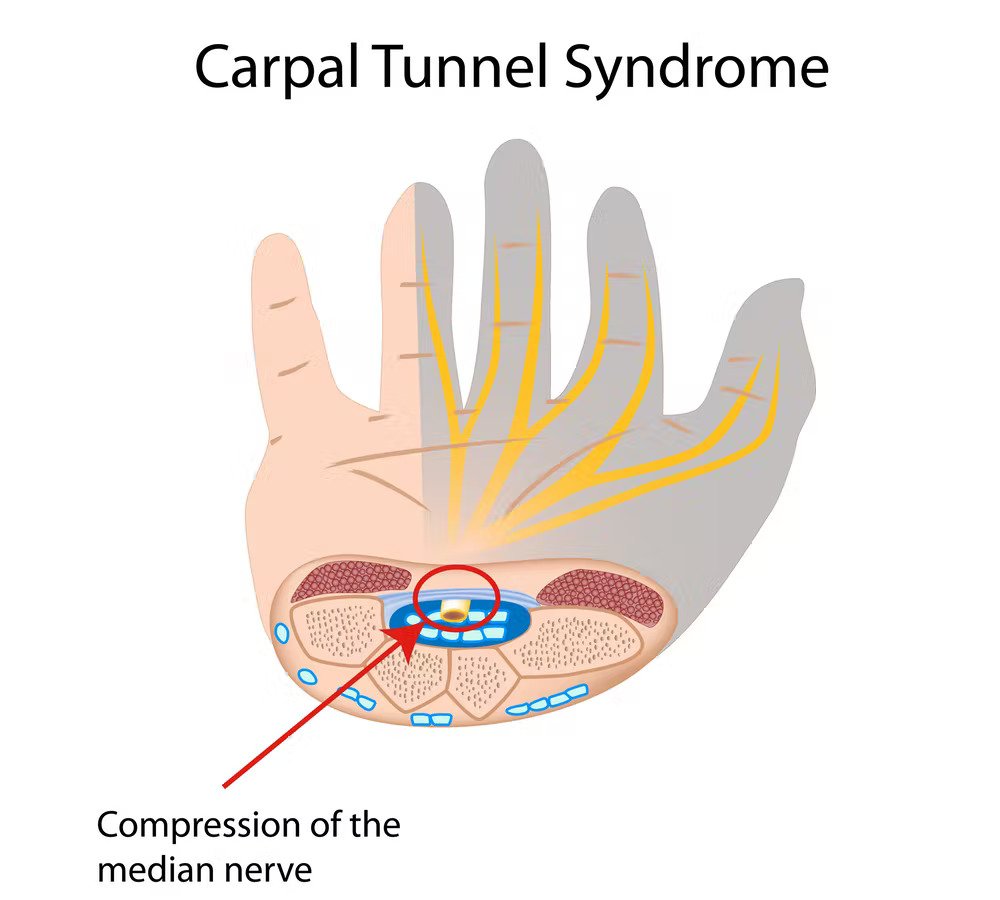Carpal Tunnel Syndrome: What are the symptoms and treatments available; Is there an alternative to surgery?
What is Carpal Tunnel Syndrome?
On the wrist/hand palm side, the carpal tunnel is a opening encircled by bones and ligaments. The median nerve in the wrist region gets compressed or trapped (entrapment neuropathy) and results in carpal tunnel syndrome.
At the wrist, the median nerve passes through a small tunnel that, if squeezed or irritated, can result in carpal tunnel syndrome. The thumb, index finger, middle finger, and half of the ring finger can experience discomfort, numbness, or tingling as a result of carpal tunnel syndrome.
The initial course of treatment often is the use of a night splint and a carpal tunnel steroid injection, unless there is significant sensory loss or damage to the nerve's ability to move.
Causes of Carpal Tunnel Syndrome
Carpal tunnel syndrome is typically brought on by a number of different circumstances.
The following are causes of carpal tunnel syndrome:
Heredity. This is probably a crucial element. Some people may have smaller carpal tunnels by nature, or there may be anatomical variations that alter the amount of space for the nerve. These features can run in families.
Repetitive Hand or Repetitive Strain Injury (RSI). The tendons in the wrist may become irritated by performing the same hand and wrist motions or activities repeatedly over an extended period of time, which can result in swelling that presses on the median nerve.
Hand and Wrist Position. Long-term use of motions that require the hand and wrist in excessive flexion or extension might put strain on the median nerve.
Pregnancy. Pregnancy-related hormonal changes may result in swelling that puts pressure on the median nerve.
Health conditions. Conditions like thyroid gland imbalance, diabetes, osteoarthritis and rheumatoid arthritis are connected to carpal tunnel syndrome.
Symptoms of Carpal Tunnel Syndrome:
The following list of signs and symptoms of carpal tunnel syndrome includes:
Specifically in the thumb and the index, middle, and ring fingers, there is numbness, tingling, burning, and discomfort. Many times, this causes nighttime awakenings.
The index, middle, and ring fingers may experience shock-like feelings.
The forearm may experience tingling or pain that radiates up to the shoulder.
Weakness and clumsiness in the hands might make it challenging to complete small tasks like buttoning your pants.
Dropping objects as a result of proprioception loss, numbness, or weakness (awareness of where your hand is in space).
Whatever it is, the way you tell your story online can make all the difference.
How Do You Know if You have Carpal Tunnel Syndrome Symptoms:
Carpal tunnel syndrome typically develops gradually and without a specific injury. Many individuals discover that their initial symptoms are cyclical. However, as the illness gets worse, symptoms could happen more frequently or last longer.
The majority of symptoms occur at night. Many people sleep with their wrists bent, so you can be awakened by symptoms. When holding something for a long time with the wrist bent forward or backward, such as when using a phone, operating a vehicle, or reading a book, symptoms frequently appear during the day.
Many patients discover that shaking or moving their hands makes them feel better.
Diagnosis:
Nerve conduction studies (NCS) currently deemed the gold standard for diagnosis; however, additional ultrasound assessment can be performed to ascertain clinical diagnosis especially if NCS is negative.
US can detect extrinsic factors causing direct compression to nerve such cysts or mass as well as detect intrinsic factors as such as shape and size of nerve.
Prevention
Carpal tunnel syndrome cannot be prevented, although the following techniques can reduce stress on the hands and wrists:
Reduce your force and relax your grip. Use a light touch when pressing the keys on a keyboard or cash register, for example. Use a large pen with a large, comfortable grip adapter and free-flowing ink for lengthy handwriting.
Take short, frequent breaks. Periodically, gently bend and stretch your hands and wrists. Change your tasks whenever you can. This is crucial if you work with machinery that vibrates or that demands you to use a lot of force. Every hour, even a few minutes can make a difference.
Watch your form. Keep your wrist from bending completely up or down. The ideal posture is in the centre, at ease. Keep the keyboard at or just below elbow height.
Improve your posture. Inappropriate posture causes the shoulders to roll forward, shortening the muscles in the neck and shoulders as well as squeezing the neck's nerves. This might result in neck pain and have an impact on the wrists, fingers, and hands.
Change your computer mouse. Make sure your wrists aren't strained when using the computer mouse.
Keep your hands warm. If you operate in a cold workplace, you run a higher risk of developing hand pain and stiffness. Put on fingerless gloves that keep your hands and wrists warm if you have no control over the workplace's temperature.
Ultrasound Guided Injection and hydro-dilatation for Carpal Tunnel Syndrome Release
Common Treatment or Medications Used for Carpal Tunnel Syndrome?
NSAIDs (anti-inflammatory medicines)
Exercises through physiotherapist including neural stretching program
Splints or braces
Life style modification
Corticosteroid (cortisone) injection if symptoms are not relieved with above measures
When to See a Clinician or Physiotherapist
See your GP or physiotherapist if you have signs and symptoms of carpal tunnel syndrome interfere with your normal activities and sleep patterns. Permanent nerve and muscle damage can occur without treatment. According to National Institute of Clinical Excellence United Kingdom (2021) Depending on clinical judgement of GP or physiotherapist, if symptoms persist following common treatments as mentioned above (conservative management before injection) they can initiate correct referral pathway or step up the treatment options.
Is Medial Nerve Hydro-dissection or hydro-dilatation an Alternative to Carpal Tunnel Surgery?
Minimally invasive hydro-dissection or hydro-dilatation can be safely performed under the ultrasound guidance using corticosteroid, saline and local anaesthetic. This medical technique removes the scar tissue that has built up around a nerve. Using ultrasound, the nerve is located, and then a needle is used to guide medicine around the nerve to release it from any tissue that may be entangling or compressing it.
Carpal tunnel syndrome can be successfully treated with hydro-dissection or hydro-dilatation. According to studies higher volume injections produced better results as hydro-dissection can decrease the movement resistance of the median nerve within the carpal tunnel (Evers et al. 2018a).
Are Carpal Tunnel Injections reliable and Accurate?
Corticosteroid injection into the carpal tunnel is both a diagnostic test and a therapeutic modality in the treatment of carpal tunnel syndrome. Carpal tunnel injections have typically been carried out "blind," or without any means to see the nerve, using local anatomic landmarks as guide. A doctor administering "blind" injections cannot guarantee precise needle placement. The nerve may be harmed by improperly placed injections, which can also reduce the effectiveness of the therapy. In one trial, only 76% of injections were accurately directed by landmarks. In this study, 1 in 4 injections did not surround the nerve, and the needle punctured the median nerve in 9% of instances (Green et al. 2020).
While individual studies using "blind" or ultrasound guided injections have demonstrated comparable results, a recent large higher quality systematic review and meta-analysis found that ultrasound guided cortisone injections performed better than landmark injections (Yang et al. 2021).
Patients receiving ultrasound-guided injections not only had significantly better clinical, neurophysiological, and ultrasound parameter outcomes than patients receiving blind injections, but ultrasound injections were also superior. A successful injection can be guaranteed with an ultrasound-guided injection, which also lowers the chance of damaging the median nerve.
In a different trial, patients who had a "blind" injection of the carpal tunnel experienced problems including tingling in 40% of cases, but not those who received an ultrasound-guided injection (Omar et al. 2018).
Carpal Tunnel Surgery
An open or endoscopic surgical technique may be used for carpal tunnel decompression, which have similar outcomes in studies [RCS, 2017] if all of the above measures failed to relieve the symptoms.
To book for an appointment you can call our normal reception line, 0121 285 5656 or email direct to hello@thepodiatryclinics.co.uk requesting an appointment. Please include your name, date of birth, your address and GP contact details.
You will be sent a form to complete and forward back to us or bring along on the day.
References:
National Institute of Clinical Excellence United Kingdom 2021. https://cks.nice.org.uk/topics/carpal-tunnel-syndrome/management/management/
RCS (2017) Commissioning guide: treatment of carpal tunnel syndrome. Royal College of Surgeons of England. https://www.rcseng.ac.uk
Muscle Nerve. 2018 Jan;57(1):25-32. Ultrasound-guided hydrodissection decreases gliding resistance of the median nerve within the carpal tunnel. Stefanie Evers 1 2 3, Andrew R Thoreson 1, Jay Smith 4, Chunfeng Zhao 1, Jennifer R Geske 5, Peter C Amadio 1
Hand (N Y). 2020 Jan;15(1):54-58. Accuracy of Carpal Tunnel Injection: A Prospective Evaluation of 756 Patients. David P Green 1, Brendan J MacKay 2, Steven J Seiler 3, Michael T Fry 2
Meta-Analysis. Sci Rep. 2021 May 17;11(1):10417. Ultrasound-guided corticosteroid injection for patients with carpal tunnel syndrome: a systematic review and meta-analysis of randomized controlled trials. Fu-An Yang 1, Ya-Chu Shih 1, Jia-Pei Hong 2, Chin-Wen Wu 2 3, Chun-De Liao 2 4, Hung-Chou Chen 5 6 7





